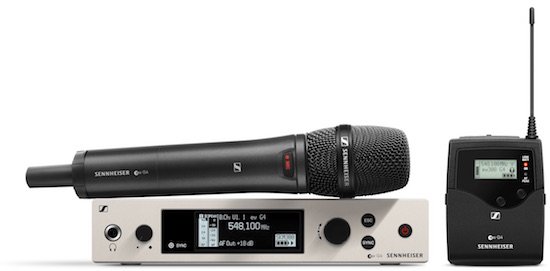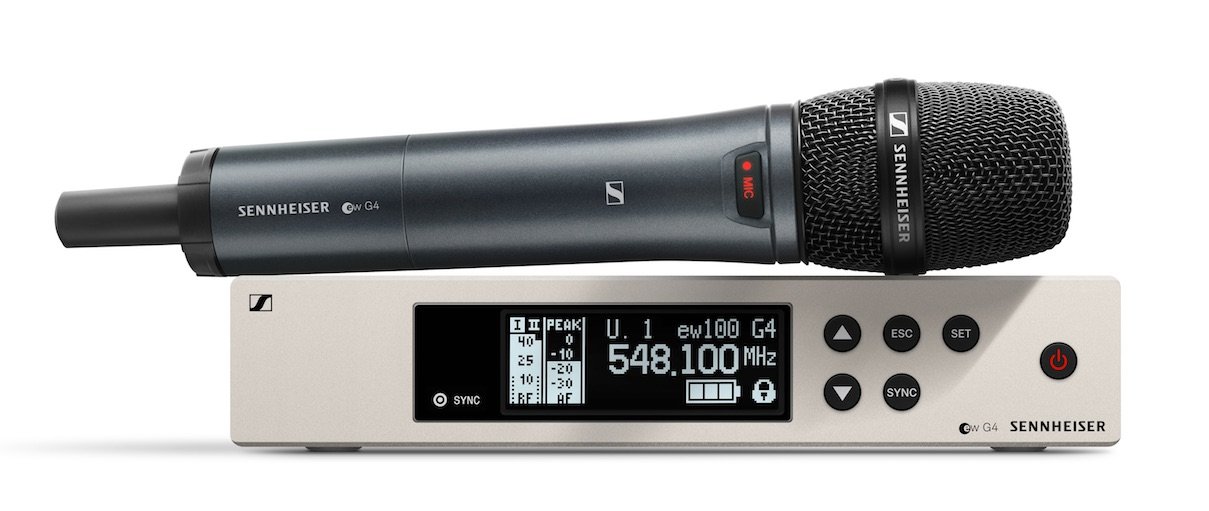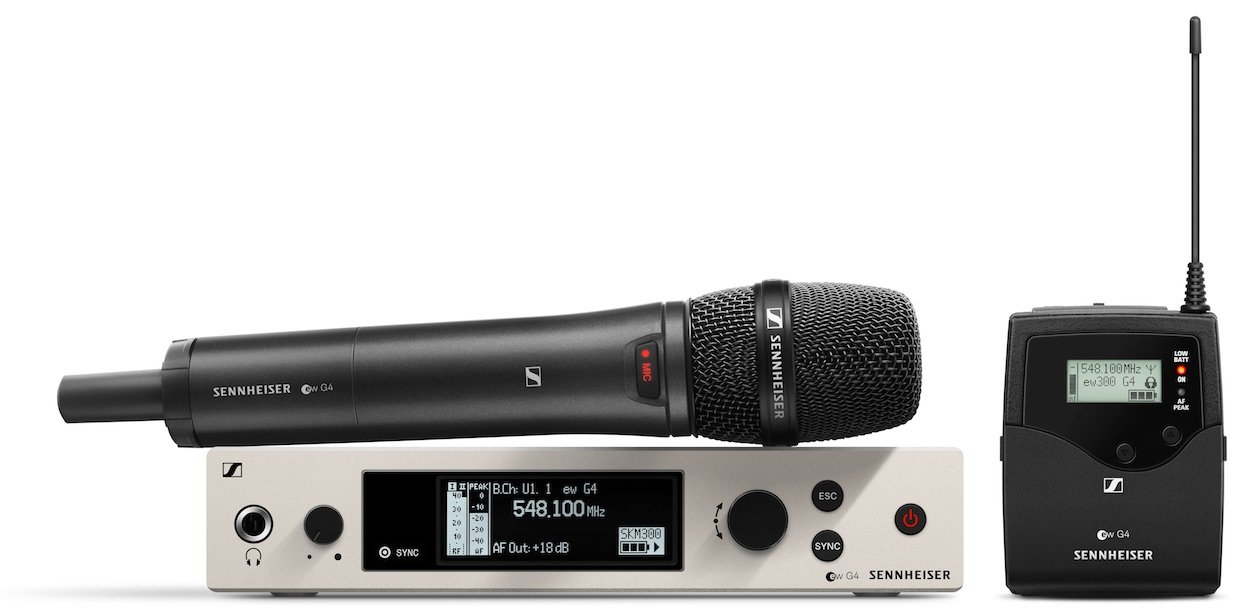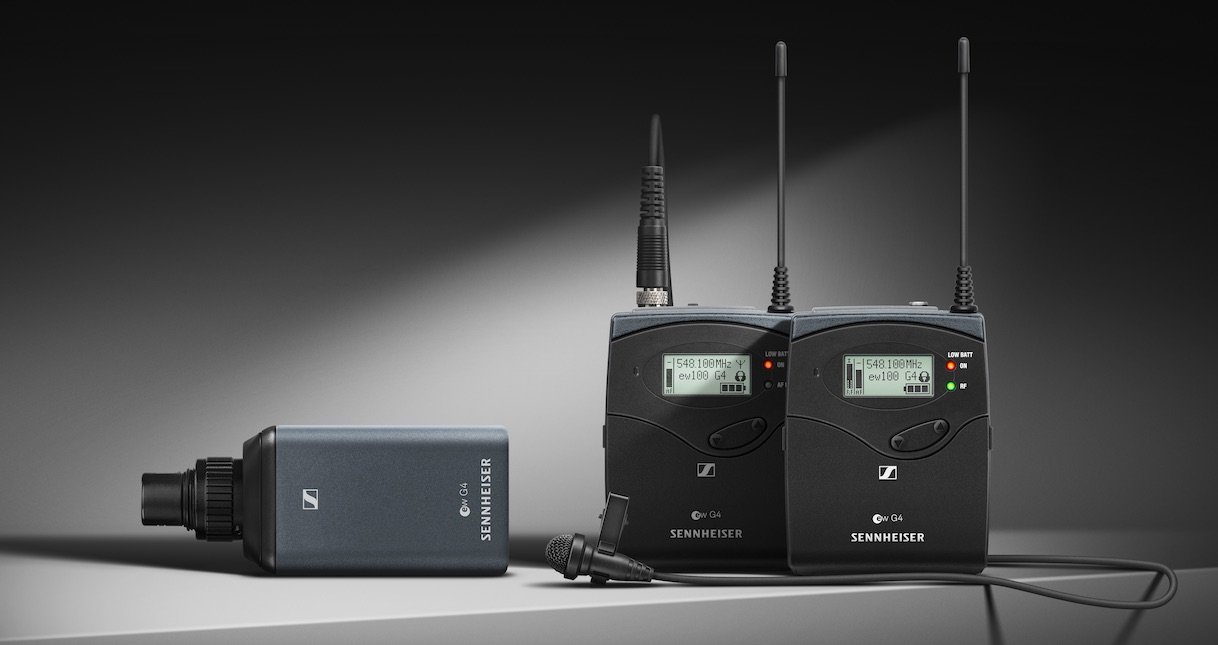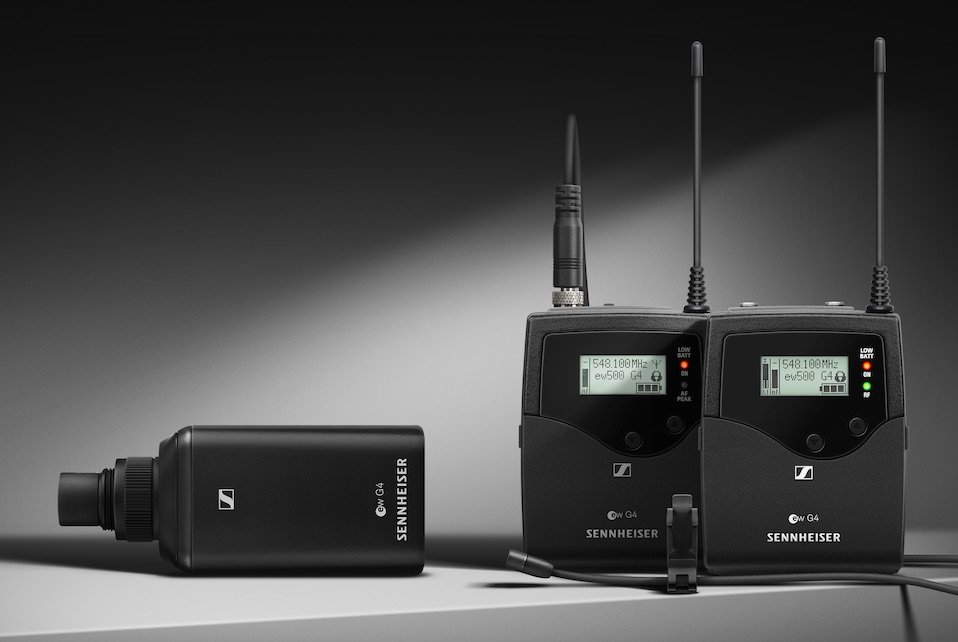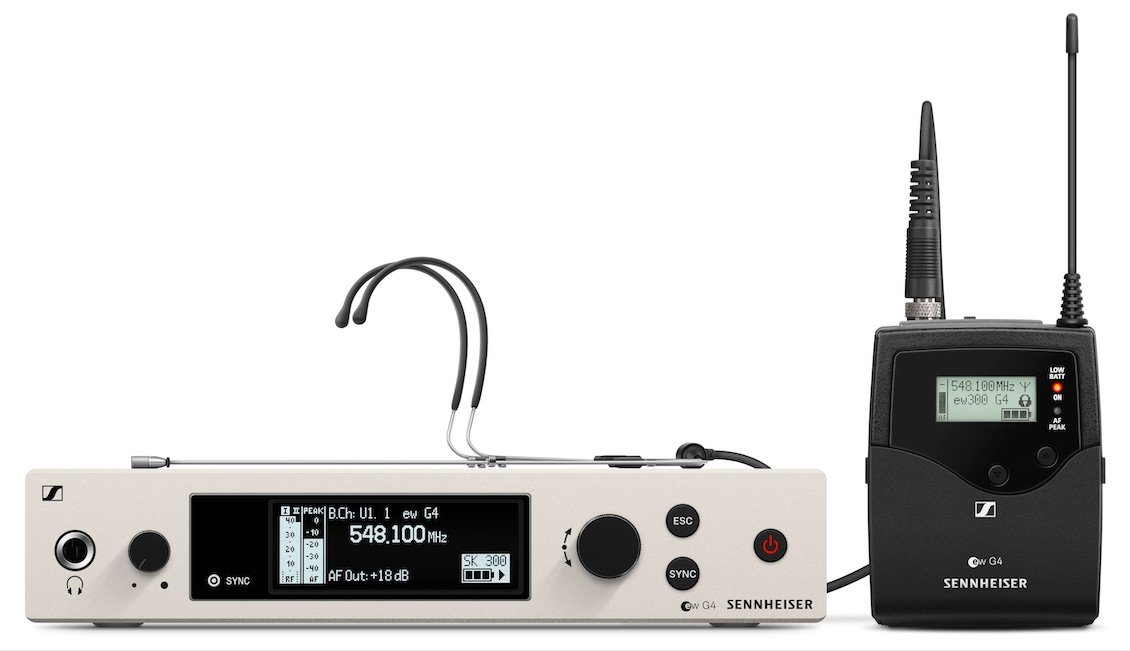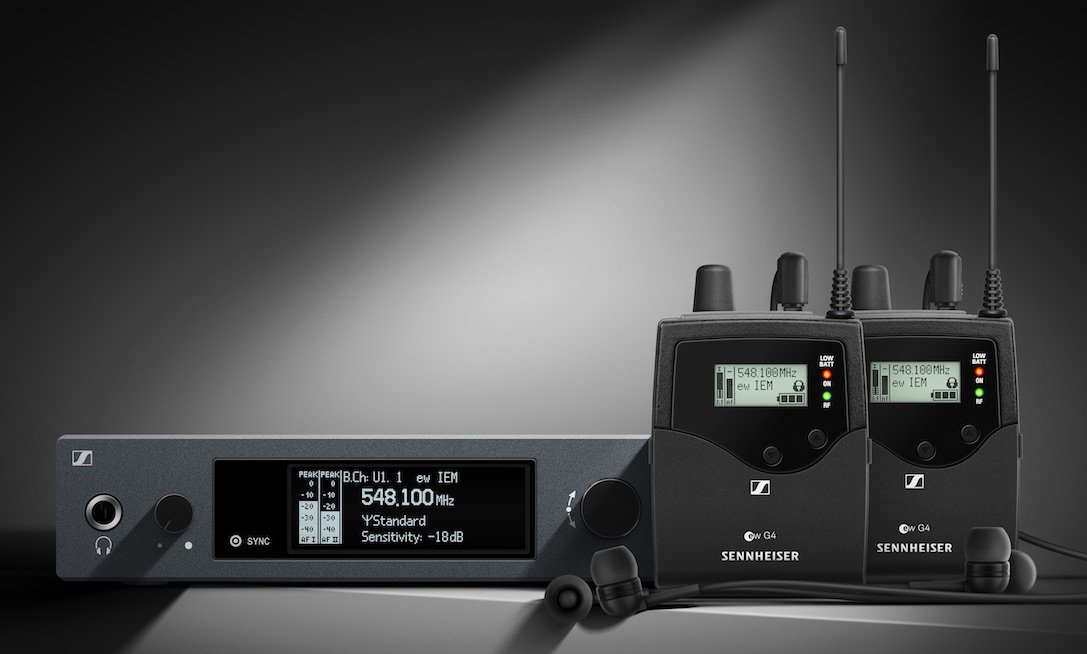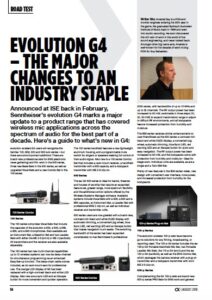Subscribe to CX E-News
Roadtest
Evolution G4 – The Major Changes to an Industry Staple
Announced at ISE back in February, Sennheiser’s evolution G4 marks a major update to a product range that has covered wireless mic applications across the spectrum of audio for the best part of a decade. Here’s a guide to what’s new in G4

Anatole Day
by Anatole Day.
Anatole Day is a FOH and monitor engineer entering his 20th year in the game. He graduated Sydney’s Australian Institute of Music back in 1998 and went into studio recording. He soon discovered the rich vein of work in the world of live sound engineering, and never looked back. Amongst other big name acts, Anatole is well-known for his decade of work mixing FOH for Guy Sebastian.
evolution wireless G3 users will recognise the familiar 100, IEM, 300 and 500 sub-series – but there are some important additions: There are brand-new professional sets for ENG (electronic news gathering) and film work in the 500 series, three new Base Sets in the 300 series, as well as upgraded Vocal Sets and a new Combo Set in the 100 series.
100 Series
The 100 series comprises Vocal Sets that include the capsules of the evolution e 835, e 845, e 865, e 935, and e 945 microphones. Also available are an Instrument Set, a Headmic Set and two Lavalier Sets with either the ME 2-II (omni) or ME 4 (cardioid). All transmitters and the receiver are also available separately.
The 100 series has new multi-channel capabilities: up to 12 wireless systems can now be daisy-chained for simultaneous programming via an enhanced Easy Set-up function. The daisy-chain cable comes included, as do rack-mount ears for professional use. The orange LCD display of G3 has been replaced with a high-contrast black and white LCD display. Also new are a sync LED and an Escape button for more convenient and quicker operation.
The 100 series handheld features a new lightweight aluminum housing, and a programmable mute switch for singers or speakers seeking full control of their audio signal. Also new is a 100 series Combo Set that includes a rack-mount receiver, a handheld transmitter with e 835 capsule, and a bodypack transmitter with ME 2-II clip-on.
500 Series
The ew G4 500 series is ideal for bands, theatres and houses of worship that require an expanded feature set, greater range, more spectrum flexibility and the additional control options offered by the Wireless Systems Manager software.
Available systems include Vocal Sets with e 935, e 945 and e 965 capsules, an Instrument Set, a Lavalier Set with professional MKE 2 clip-on, as well as individual receiver and transmitter units. 500 series users are now greeted with a brand-new, contrast-rich black and white OLED display with automatic dimming, a convenient jog wheel, blue Sync LED, red warning LED and an Escape button that makes navigation much easier.
The switching bandwidth of the series has been expanded considerably to rival Sennheiser’s professional 2000 series, with bandwidths of up to 72 MHz and up to 32 channels. The RF output power has been increased to 50 mW, switchable in three steps (10, 30, 50 mW) to expand transmission range or adjust to difficult RF environments, and all bodypacks feature increased protection from humidity and moisture.
The IEM series receives similar enhancements to user-friendliness as the 500 series: a contrast-rich black and white OLED display, a convenient jog wheel, automatic dimming, blue Sync LED, red warning LED and an Escape button for quick and easy navigation. The RF output power has been increased to 50 mW, and the bodypacks come with protection from humidity and moisture – ideal for stage work.
Individual units are available, as are a single and a Twin IEM Set. Plenty of new features in the IEM series: sleek, new design with convenient user interface, more power, and increased protection from humidity for the bodypacks.
100-p Series
The evolution wireless 100-p sets have become go-to solutions for any filming, broadcasting, or reporting need. The 100-p G4 series includes the ew 135-p G4 Portable Handheld Mic Set, two Portable Lavalier Mic Sets, the 112-p G4 (omni) and the ew 122-p G4 (cardioid), as well as the ENG Combo Set, which packages the camera receiver with a plug-on transmitter and a bodypack transmitter with omni ME 2-II clip-on.
500-p Series
Complementing the G4 100-p sets are brand-new 500-p series PRO Sets for ENG work and generalfilming needs. Systems include the ew 512-p G4 Pro Portable Lavalier Mic Set (with camera receiver, bodypack transmitter, professional MKE 2 lavalier mic and various accessories), the ew 500 BOOM G4 Pro Portable Boom Set (with camera receiver, plug-on transmitter with phantom power and accessories) and finally the Pro Film Combo Set, which includes both transmitter types (bodypack and plug-on), the camera receiver and accessories.
Compared to the 100-p series, the 500-p systems operate with a higher switching bandwidth of up to 72 MHz (compared to 42 MHz) and thus a higher channel count. Additionally, the systems feature a selectable output power of up to 50 mW and are less sensitive to moisture. All 100-p and 500-p series components are also available separately.
300 Series
Targeting users in corporate, hospitality and education settings, the 300 series comprises a Vocal Set with an e 865 microphone head, a Lavalier Set with the ME 2-II clip-on, and a new Headmic Set which includes the SL HEADMIC 1.
Also new in the series are the Base Sets, which provide a cost-efficient way to update or expand existing evolution wireless systems. All Base Sets include a receiver and transmitter but come without the microphone or the microphone head, ready for use with existing accessories. There are Base Sets that include a handheld or a bodypack, or a Combo Set with both options. Handhelds, the bodypack and the receiver can also be ordered separately.
The 300 series features an increased switching bandwidth of up to 72 MHz or up to 32 channels, allowing for large set-ups in multiple rooms. The series features the same new user interface and increased output power of 50 mW as the 500 series. The bodypacks’ protection against humidity has been improved too. An integrated network port allows for remote control and monitoring via the Wireless Systems Manager or the convenient Sennheiser Control Cockpit software. Meanwhile, the receivers are ready for integration into the LSP 500 PRO wireless loudspeaker system.
Review
Sennheiser’s evolution G3 has been around a long time, and it’s been my go-to wireless kit up until now, particularly for IEMs. I’ve always found G3 solid, reliable, and standard in a lot of production houses, as well as a staple in the minds of most artists. That’s why it’s been at the top of my rider.
First Impressions
I was given twelve channels of 500 Series mics and receivers and three sets of 500 Series IEMs ahead of mixing Sennheiser’s G4 launch events in Sydney, Melbourne, and Auckland in May 2018. It gave me time to familiarise myself with their capabilities and new features before using them for a variety of musical performances and speech presentations at the events themselves.
I assigned four handhelds and five beltpack transmitters, with three handhelds and beltpacks dedicated to the musical performers, leaving one handheld and two transmitters for presenters. I chose the 945 capsules for the handhelds, a couple of jack to mini-jack adapters for direct input of instruments, and two MKE 2 headsets for speech.
Most of the presentations were in quite small rooms, placing the presenters quite close to the PA, meaning a headset was a much better choice than a lapel for best gain before feedback.
My first impression of the G4 receivers is that they look slightly different, as the next step along in
a natural progression. The black and white LCD display is nice, and much more performance-friendly than G3. The black and white makes it a bit less visually intrusive than the G3’s orange and red, especially when they’re sitting in a rack side of stage. There’s a setting in G4 that lets you choose if you want the display to reverse polarity or to flash the Sync light if there’s any problems.
Set-up
The new 100s have a data cascade port that can daisy chain up to 12 units for easy set-up, but
the 300s and 500s connect via Ethernet ports to a switch. We connected our system to a simple Netgear switch, and instead of running Sennheiser’s Wireless Systems Manager software, I simply ran the on-board scanner, came up with the cleanest group, and assigned my channels from there.
The scan is run from the first unit in the system, but you don’t have to do your assignments in order. The scanner displays RF level as it runs, so you can make your own judgement call to avoid noisy channels. It was extremely quick and easy.
Sync
After the scan, pairing the transmitters is the easiest and quickest way to copy settings across. I think syncing is definitely quicker on the G4 than the G3. In the sync setting, there are a lot of different options you can set – power lock, frequency lock, and input sensitivity to name the most important. Every setting or change you make on the receiver pushes to the mic when you sync. These settings cover all the problems you can encounter, like beltpacks that aren’t power locked.
You can adjust behaviours to give performers a mute switch on their beltpacks for guitarists changing guitars, or corporate presenters that want a temporary mute as a ‘cough switch’, or you can disable all of these functions. If you change something on the mic (gain, for example) after about 30 seconds it pushes to the receiver. Anyone sitting in radio-land can see the change come up on the receiver.
IEMs
Both G3 and G4 evolution IEMs have a great function called ‘engineer mode’, so the monitor engineer can dial in and switch between performer’s settings on their own pack. G3 enabled 12 different pack profiles to be saved and accessed by the engineer, and G4 enables 16.
G4 has now added a great feature in pack-to-pack walk-up. A monitor engineer can walk on stage during sound check and sync their pack directly with the performer’s. It picks up everything – the frequency, the mix, EQ, gain, and limiter settings. You can make adjustments, sync again, and move on to the next one. The pack stores all the profiles and you can then scroll through them as needed, so you hear exactly what the performer is hearing.
Sound Quality
I found the actual sonic quality of the G4 range to be first class, as you would expect from a Sennheiser product. There is virtually no handling noise from the mics themselves and they handle plosives very well. There are no compansion issues within the hardware, so it all comes together exactly how you would expect. The IEMs are second to none with regards to how they sound and the imaging that they create within the musician’s head. You can get really great separation between different sound sources by placing them in different areas from left to right.
Conclusion
evolution G4 is a definite improvement over G3. It has a wider tuning range in the 300 and 500 series, better and faster sync, clearer displays, the RF is stronger, and it is easier to set up.
The changes are not revolutionary, and Sennheiser is not reinventing the wheel, but G4 provides everything you would expect from a refresh of an industry standard product. I know G4 will be snapped up by production houses and touring acts quickly, as it is the next logical step in wireless.
Brand: Sennheiser
Model: evolution wireless G4
Product Info: sennheiser.com
Australia: en-au.sennheiser.com
New Zealand: en-nz.sennheiser.com
This article first appeared in the September 2018 edition of CX Magazine – in print and online. CX Magazine is Australia and New Zealand’s only publication dedicated to entertainment technology news and issues. Read all editions for free or search our archive www.cxnetwork.com.au
© CX Media
Subscribe
Published monthly since 1991, our famous AV industry magazine is free for download or pay for print. Subscribers also receive CX News, our free weekly email with the latest industry news and jobs.


